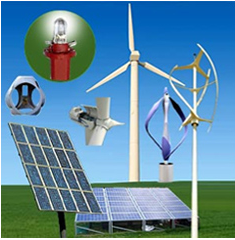Renewables
Renewables resources:
There are some types of energy resources that are renewable and these are known as a renewable energy resource. They are called this because unlike non-renewable energy resources they will not run out and can be replaced, and originate from natural resources like wind, the sun, trees, and the tide and these can be naturally replenished, so they are therefore renewable. They are becoming a much more viable alternative to using non-renewable energy resources such as fossil fuels and nuclear power. They take the form of many different types of energy resources such as solar, wind, geothermal, biomass and tidal.
Market opportunities for renewable energy resources
Renewable energy resources are now holding a reasonable share of the energy resource market, because in 2010 renewable energy represents 16.6%. With this figure expecting to grow over the coming years, because of the rapidly depleting fossil fuels, renewable energy resources are becoming a more viable option for people to use them as the cost to produce energy from renewable resources are becoming a lot more cheaper. There has been evidence that demand for renewable energy such as the number of households using it in the UK growing from 2% to 2.5% from 1997-1998. What’s more, environmental concerns such as global warming meaning means that there are increasing pressures to use renewable and environmentally friendly energy resources.
This can be seen in government legislation and targets of many countries to be carbon neutral, for example in Britain there is the Zero Carbon Britain 2030, proposing that there will be no carbon emissions by 2030. This is something that is happening all around the world with many countries looking to introduce schemes to reduce carbon emissions, by using renewable energy sources. Further examples of governments to use renewable energy resources like Europe who aims to be using 100% renewable energy resources by 2050 in the vision 2050 later reduced to 2040 in 2011. There is also some legislation that have been introduced to increase the production and efficiency of renewable energy resources such as the American and Recovery investment act of 2009, which means that more than $70 billion in direct spending and tax credits for clean energy and associated transportation programme.



